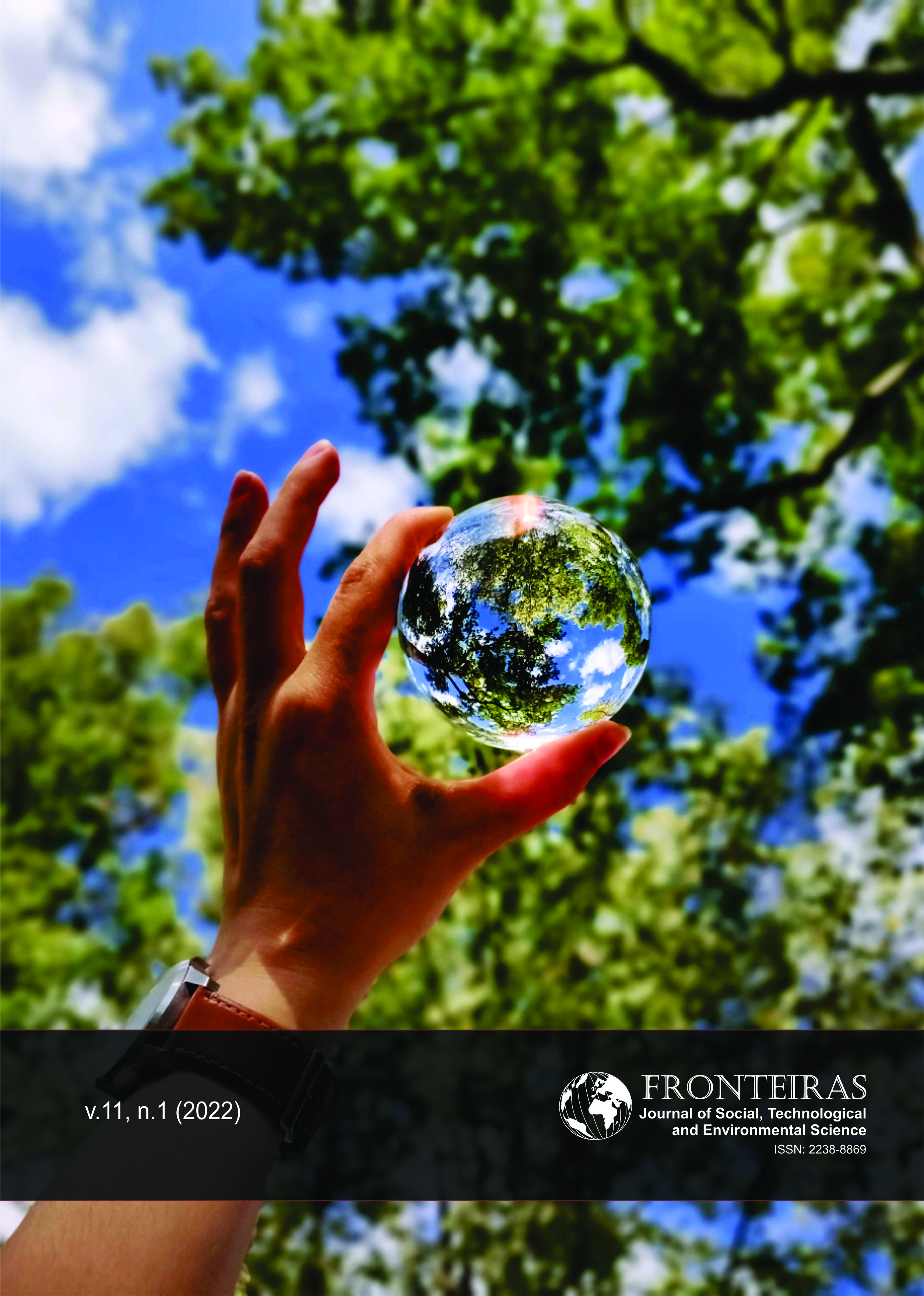Mechanical Drying of Azadirachta indica A. Juss. Seeds: a Tool to Keep Quality of this Eco-Friendly Bio-Insecticide
DOI:
https://doi.org/10.21664/2238-8869.2022v11i1.p39-44Palavras-chave:
secagem ao sol, qualidade físico-química, sementes processadasResumo
Produtos oriundos das sementes de Azadirachta indica A. Juss. (Meliaceae) são mundialmente reconhecidos como bioinseticidas “ecofriendly”. Entretanto o processamento inadequado das sementes pode ocasionar perdas significativas na efetividade dos produtos, uma vez que os teores de azadiractina, seu principal constituinte, podem ser afetados. O objetivo deste trabalho foi avaliar o grau de degradação da azadiractina presente nas sementes de A. indica durante o processo de secagem em estufa sob diferentes condições de temperatura e vazão de ar. Para tanto, amostras de sementes frescas foram trituradas e submetidas a 11 experimentos de secagem em temperaturas de 55 - 65 °C e fluxos de ar de 0,015 – 0,023 m3.kg-1.s-1, conforme delineamento composto central rotacional 22, com triplicata no ponto central. Os teores de azadiractina nas amostras dessecadas e frescas foram determinados por Cromatografia a Líquido de Alta Eficiência (CLAE). Não houve efeito significativo das temperaturas e fluxos de ar sobre os teores de azadiractina.
Referências
Barros Neto BB, Scarmínio IS, Bruns RE 2010. Como fazer experimentos: Pesquisa e desenvolvimento na ciência e na indústria 4 ed, UNICAMP, Campinas, 404pp.
Brazil 2017. Farmacopeia Brasileira 5 ed, Supplement, Anvisa, Brasília, 1016pp.
Chen H, Zhang M, Fang Z, Wang Y 2013. Effects of different drying methods on the quality of squid cubes. Drying Technol 3:1911-1918.
Fernandes SR, Barreiros L, Oliveira RF, Cruz A, Prudêncio C, Oliveira AI, Pinho C, Santos N, Morgado J 2019. Chemistry, bioactivities, extraction and analysis of azadirachtin: State-of the-art. Fitoterapia 134: 141-150.
Gahukar RT 2014. Factors affecting content and bioefficacy of neem (Azadirachta indica A. Juss.) phytochemicals used in agricultural pest control: A review. Crop Prot 62: 93-99.
Hiwale S 2015. Neem (Azadirachta indica). In Sustainable Horticulture in Semiarid Dry Lands. Springer, New Delhi, p. 281-289.
Immaraju JA 1998. The commercial use of azadirachtin and its integration into viable pest control programmes. Pestic Sci 54: 285-289.
Kara C, Doymaz I 2015. Effective moisture diffusivity determination and mathematical modelling of drying curves of apple pomace. Heat Mass Transfer 51: 983-989.
Kizilkaya R, Akça I, Askin T, Yilmaz R, Olekhov V, Samofalova I, Mudrykh N 2012. Effect of soil contamination with azadirachtin on dehydrogenase and catalase activity of soil. Eurasian J Soil Sci 2: 98-103.
Kumar A, Prasad M, Mishra D, Srivastav SK, Srivastav AK 2012. Acute toxicity of azadirachtin to a teleost, Heteropneustes fossilis. Acta Sci, Biol Sci 34(2): 213-216.
Kumar VS, Navaratnam V 2013. Neem (Azadirachta indica): Prehistory to contemporary medicinal uses to humankind. Asian Pac J Trop Biomed 3(7): 505-514.
Neves EJM, Carpanezzi AA 2008. O cultivo do nim para produção de frutos no Brasil. Circular Técnica Embrapa Florestas 162: 1-8.
Paula JAM, Brito LF, Caetano KLFN, Rodrigues MCM, Borges LL, Conceição EC 2016. Ultrasound-assisted extraction of azadirachtin from dried entire fruits of Azadirachta indica A. Juss. (Meliaceae) and its determination by a validated HPLC-PDA method. Talanta 149: 77-84.
Pitta RM 2010. Bioatividade de extratos orgânicos de meliáceas e óleos essenciais de piperáceas sobre Rhopalosiphum maidis (Hemiptera: Aphididae). PhD Thesis, Escola Superior de Agricultura Luiz de Queiroz, Piracicaba, 101 pp.
Roychoudhury R 2016. Neem products. In Omkar (Ed.). Ecofriendly Pest Management for Food Security. Academic Press, Cambridge, p. 545-562.
Tajane S, Dadhe P, Mehetre S, Mandavgane S 2017. Characterization and testing of fine powder formulation of whole neem fruits. Current Science 112(9): 1942-1948.
Tanuja K, Kavitha G, Karuna R, Sashidhar RB 2012. Substrate suitability of neem seed kernel for the growth and elaboration of aflatoxins by Aspergillus parasiticus (NRRL-2999). Indian J Nat Prod Resour 3: 395-406.
Tiwari R, Verma AK, Chakraborty S, Dhama K, Singh SV 2014. Neem (Azadirachta indica) and its potential for safeguarding health of animals and humans: a review. J Biol Sci 14(2): 110-123.
World Health Organization 2003. WHO guidelines on good agricultural and collection practices (GACP) for medicinal plants. WHO, Geneva, 72 pp.
World Health Organization 2011. Quality control methods for herbal materials. WHO, Geneva, 173 pp.
Yakkundi SR, Thejavathi R, Ravindranath B 1995. Variation of azadirachtin content during growth and storage of neem (Azadirachta indica) seeds. J Agric Food Chem 43: 2517-2519.
Downloads
Publicado
Como Citar
Edição
Seção
Licença
Esta revista oferece acesso livre imediato ao seu conteúdo, seguindo o princípio de que disponibilizar gratuitamente o conhecimento científico ao público proporciona maior democratização mundial do conhecimento.
A partir da publicação realizada na revista os autores possuem copyright e direitos de publicação de seus artigos sem restrições.
A Revista Fronteiras: Journal of Social, Technological and Environmental Science segue os preceitos legais da licença Creative Commons - Atribuição-NãoComercial 4.0 Internacional.


